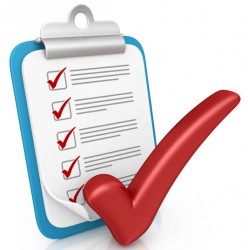
1). Make sure analytics code is installed and working properly. It sucks to jump into your analytics account to check traffic on your new site and see a big fat zero and realize nothing was ever being tracked.
2). Add WordPress SEO plugin. There are other SEO plugins out there but Yoast’s plugin is the best option currently. Others that I’ve tried are buggy, less than intuitive, or are lacking important features. Set the default values for title & description tags on all page types.
3). If not using WordPress, double check that you’re not duplicating titles, don’t have empty titles or descriptions, and your titles are appropriate for the content of your pages.
4). Proper use of heading tags (h1-h6). Make sure you don’t go crazy with these. I still see sites with 3 or more h1 tags on the page. Maybe it works for somebody, but it’s not semantically correct.
5). Check your links. Use something like Xenu to crawl the site and look for broken or dead links. There’s not much more annoying to a user than clicking a link and not getting what was expected.
6). Custom 404 page. Help users out by making your 404 page useful.
7). All images should have alt text. Don’t cram it full of keywords either. Make it useful.
8). Run each page type through the W3C validator and make sure it’s not a mess of errors. I prefer to get as close to 100% validation as possible, but sometimes that’s just not feasible if dev time is limited
9). View the site in as many browsers as you can. You can test the look and feel with tools like BrowserLab, but sometimes those aren’t enough. You may have issues that only show up when actually navigating through the site the same way a normal user would.
10). Test the site in various resolutions. This is especially important if you have a responsive design. It’s amazing how many sites look horrible when viewed on half the screen using something like BetterSnapTool.
11). Read through all of your content and check for grammar and spelling errors (with the exception of blog posts if you have a lot of them).
12). Add redirects to deal with canonical issues.
13). Set up an xml sitemap.
14). If your site has a search box, make sure it works and make sure the search result page is styled
15). Test all forms. In fact, this should be something that’s tested on a regular basis. If people can’t contact you or perform the action you want them to, you fail.
16). Add a favicon. This is especially important if you’re using a WordPress theme that has a default favicon. With tabbed browsing, it’s much easier for users to get back to your site if it has a unique favicon.
17). Add a robots.txt file and block appropriate URLs
18). Implement caching. I pretty much always use W3 Total Cache. It’s well supported and easy to install.
19). Add social media buttons where necessary. Not all sites will need them, but if you have a blog, it’s critical to have these in place. Let people share your content
20). Don’t break old pages. If you’re getting rid of old pages on a site as part of launching a new version, make sure to redirect those old page URLs to somewhere that makes sense. This should be a given at this point, but it still happens far more often than it should.
21). If you have any existing campaigns sending traffic to specific pages on the site, make sure the new version of the page isn’t going to kill your conversions. For example, if you have a PPC campaign that converts well, it may be beneficial to keep the old design for those landing pages.
22). Set up monitoring. I use Binary Canary for basic monitoring. At AuthorityLabs, we also use tools like Scout and New Relic to monitor performance.
23). Update WordPress and all plugins. These are continuously being changed, so make sure you’re not going live with a site that already has outdated code.
24). Set up Akismet.
25). Configure WordPress permalinks. If you’re not sure what to use for permalinks, Michael Gray wrote up a good post on how to choose a permalink structure.
26). Add login lockdown to help prevent brute force login attempts.
27). Test page load times on your most important pages. I usually use Pingdom and PageSpeed for Chrome.
28). Load test your site. Checking the site one page at a time isn’t going to give you the full scope of how it’s going to perform in real world use. You may find that after 10 or 100 concurrent users, things start slowing down. One of the easier tools for doing this is Blitz.io
So that is my list. Am I missing anything important? Bookmark this post and feel free to use it for yourself. I will try to keep it updated if any new processes or tools need to be added.
